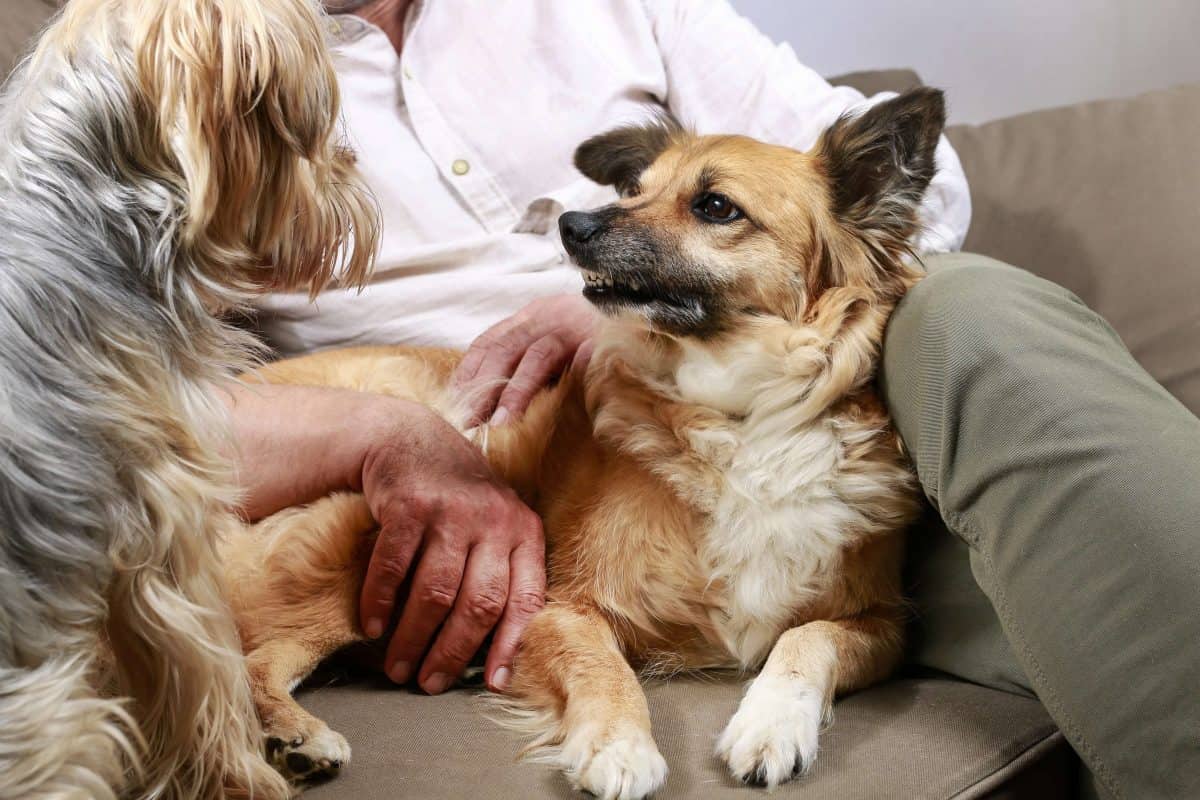When Your Dog Growls …

So Your Dog Growls...To Punish or Not to Punish?
A stranger approaches your dog, and your dog growls. Your dog is dozing on the couch, and you sit down next to him, startling him awake, and he growls. Perhaps your dog is chewing on a favorite toy or eating his food and a child reaches for the toy or the bowl, and your dog growls. As humans, our knee-jerk response is to scold the dog. For some, it might even be to hit the dog for growling, the intention being to tell the dog that such “aggressive” behavior is unacceptable. But…is this really the best way to respond?
Let’s unpack the growl and look at the pros and cons of our possible responses.
Distance Decreasing Signals
Dogs communicate using body language and their voice. Some signals that dogs give are what we call distance decreasing signals. These are pro-social signals that are inviting interactions. Examples of distance decreasing signals include play bows, bringing toys to you, a soft, wiggly body, and even play barking.
Distance Increasing Signals
Other times, dogs will give signals we refer to as distance increasing signals. These are diplomatic signals that indicate the dog needs more space to feel comfortable. They are the dog’s way of saying “back off, I don’t want to fight.” Examples of these signals include showing teeth, stiffened body posture, lip-licking, showing the whites of their eyes (called “whale eye”), and growling.
Taking a closer look, growling is a distance INCREASING signal. It is one of the most diplomatic ways a dog can say, “you are too close, please back off.” The growling dog is choosing to not lunge. He is choosing to not bite. He is speaking his concerns and asking politely for increased personal space.
The "Out of the Blue" Bite
What happens when we punish the growl? The dog learns to not growl. He stops telling us he is uncomfortable when you reach for his food or toy. Sparky doesn’t let you know that you are sitting too close when you go in for a cuddle while he’s trying to sleep. He avoids telling the stranger that he doesn’t feel comfortable being pet. In all these cases, the dog is very likely still uncomfortable; however, he has learned that it’s not safe to tell us about his discomfort. This is where we get the “out of the blue” bite. The bite in each of these scenarios is preventable. It just requires a different approach.
Heed the Warning
The best way to help our dogs avoid the “out of the blue” bite is to heed their verbal warning. When we empower our dogs with the gift of understanding their communication, they will be far less likely to escalate from a growl to a bite.
How do we do this?...We listen.
When you reach out to pet and the dog growls, move your hand away. Assess the situation. Was the dog sleeping? Eating? Chewing on a toy? Is he in pain? Adjust your approach or change the environment to help the dog feel safe. Wait until he approaches you and requests contact.
Training
Of course, we sometimes have to do things the dog may not like. This is where training and classical conditioning come into play. We can set up the environment, practice at calm times, and help the dog learn to be comfortable with certain kinds of handling, even if they don’t love it. If your dog is growling at you, give him space. Try to determine what’s upsetting him. Hire a force free / Fear Free ™ trainer to help you learn how to help your dog feel safe enough that he no longer needs to growl. Whatever you do, though, DON’T PUNISH THE GROWL.
Now, go enjoy your dog, and have fun training!
Author - Jody Epstein
Jody Epstein is a certified behavior consultant, certified professional dog trainer, and holds a master’s degree in animal behavior from Tufts University. She has been training professionally for more than 12 years and is pleased to be part of the Academy of Pet Careers team, teaching the next generation of trainers. Look out for her blogs on all things dog training and animal behavior.

